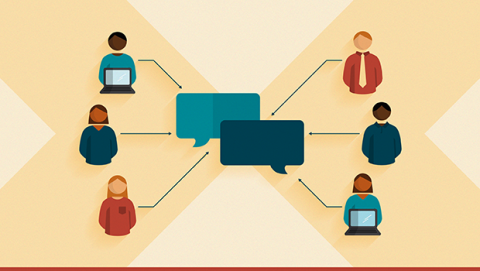In an effort to maintain our competitive advantage, the IT organization at CVS Health took important steps a little over 18 months ago to better understand our customers, which resulted in increased agility, more customer-focused teams, and ultimately greater levels of success.
At the center of this cultural transformation was the decision to combine part of our business operations with the IT organization. Specifically, we merged the group that deals with administering the drug benefit plans for our clients with the core IT team.
When we sell a prescription benefit program to one of our customers, there is a team that performs all the installation planning, the coding of the benefits, the testing of the benefits, the integration with health plans and other third parties, and determines where accumulation data is shared. When we looked at those processes, we realized they had very similar operational characteristics to the behaviors that occur inside the IT organization, and that there would be important customer benefits if we merged these two groups.
Since combining these two units, we have seen tangible benefits that this collaboration has brought to the business. But I think what our IT organization has gotten out of it is what’s really unique. It’s brought IT a lot closer to our customers.
In many cases, not only are teams sharing disciplines, but they’re actually co-located and, in some cases, even co-managed. For example, there’s a group that deals with managing the list of eligible patients associated with a particular benefit. That group has business operations staff that set up the feeds and the interfaces to make sure the data is transformed properly, is compatible, and that the right control report is sent back to the client. In most cases, it’s all done through configuration but, on occasion, it requires software to be written. When that’s the case, there’s a corresponding eligibility development team that has to write the software for them. We were watching this and gathering statistics on when IT involvement was needed and concluded that it would be most efficient to have the same person managing the business team also run the IT team, giving them full accountability for customer outcomes.
By reconfiguring these groups, we created a much more empowered combined team, which resulted in increases and improvements to our speed to market. Most importantly, we established more empathy inside the IT organization for the customer. Now, it’s not just a technical project or problem that they’re solving for; they understand who the customer is and the business purpose of what they’re doing.
This cultural transformation was not without its challenges. When we started introducing some of the IT disciplines into business operations it took a while for everyone to embrace the change. It was different than the way they were accustomed to doing things, and they realized it would also change the accountability landscape.
For example, of the thousands of benefit changes we make to client profiles each year, we haven’t missed a single commitment in over 16,000 benefit changes since combining these teams.
There are also intangible benefits to our new operating model. Now the IT leadership team is sought after in traditionally business contexts, because IT is no longer viewed simply as a technology provider but an in-house professional services organization within the company.
These kinds of cultural transformations are never easy, especially for IT organizations that tend to be internally focused. At first, they require a lot of coaching, influencing, and reinforcement. But you know you’ve been successful when you can turn your back on an operation and the level performance sustains itself. That’s my measure of success.
It’s like teaching a kid how to ride a bike. You let your hand off the bike, and the bike starts to tip over a little bit, so you reapply your support. But one day, you watch your child ride their bike without any help and with great control for where they are going.
For the new collaborative groups we’ve created at CVS Health, not only are they riding the bike on their own, they’ve become master cyclists with one goal in mind: delivering great outcomes for our customers.
Now that’s an incredible asset.







Comments
Steve: Remarkable transformation. The idea of co-location of IT and business processes also lends itself to innovative ways to re-engineer business processes to bring in meaningful efficiencies.
Interesting. The company I worked for 30 years ago did basically the same thing. It worked quite well there.
Great concept but it fails when my receipt tells me to insert the "survey Id" and the number on the receipt is 12 digits and not 17 as requested.
I am a customer of CVS in South Florida (ExtraCare # ********9304) who (unfortunately) spends lots of $$$$$ at your Coral Gables pharmacy (#4059). Yesterday I spent over $300.00 and for the first time tried to complete the "survey" (#9201-7280-3058-9059).....but your system kept asking for a 17 digit number....?
Not everything at CVS- IT is working !!
Great concept but it fails when my receipt tells me to insert the "survey Id" and the number on the receipt is 12 digits and not 17 as requested.
I am a customer of CVS in South Florida (ExtraCare # ********9304) who (unfortunately) spends lots of $$$$$ at your Coral Gables pharmacy (#4059). Yesterday I spent over $300.00 and for the first time tried to complete the "survey" (#9201-7280-3058-9059).....but your system kept asking for a 17 digit number....?
Not everything at CVS- IT is working !!